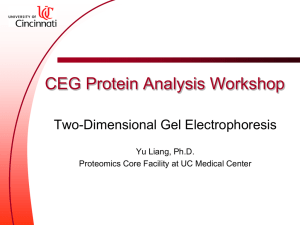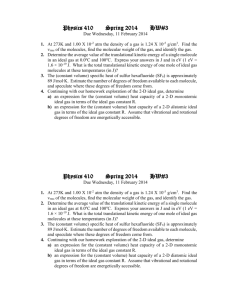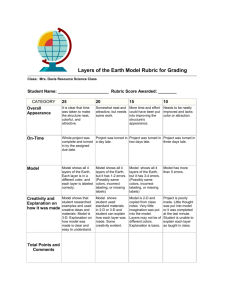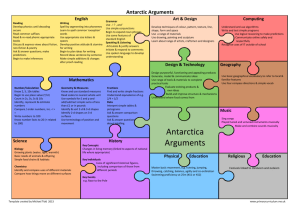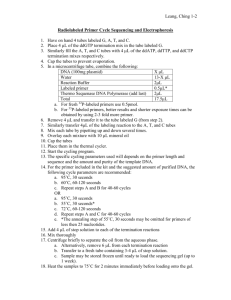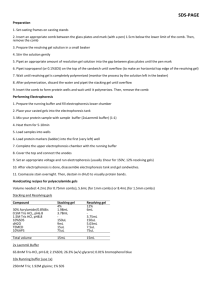About 2-D Fluorescence Difference Gel Electrophoresis (2
advertisement
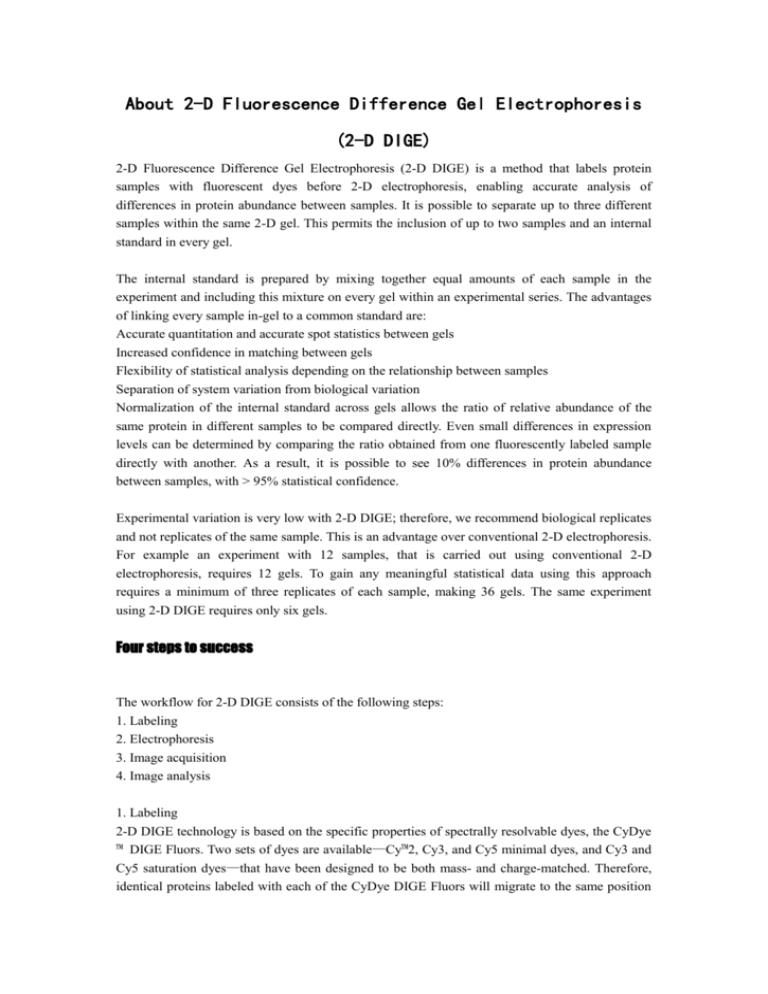
About 2-D Fluorescence Difference Gel Electrophoresis (2-D DIGE) 2-D Fluorescence Difference Gel Electrophoresis (2-D DIGE) is a method that labels protein samples with fluorescent dyes before 2-D electrophoresis, enabling accurate analysis of differences in protein abundance between samples. It is possible to separate up to three different samples within the same 2-D gel. This permits the inclusion of up to two samples and an internal standard in every gel. The internal standard is prepared by mixing together equal amounts of each sample in the experiment and including this mixture on every gel within an experimental series. The advantages of linking every sample in-gel to a common standard are: Accurate quantitation and accurate spot statistics between gels Increased confidence in matching between gels Flexibility of statistical analysis depending on the relationship between samples Separation of system variation from biological variation Normalization of the internal standard across gels allows the ratio of relative abundance of the same protein in different samples to be compared directly. Even small differences in expression levels can be determined by comparing the ratio obtained from one fluorescently labeled sample directly with another. As a result, it is possible to see 10% differences in protein abundance between samples, with > 95% statistical confidence. Experimental variation is very low with 2-D DIGE; therefore, we recommend biological replicates and not replicates of the same sample. This is an advantage over conventional 2-D electrophoresis. For example an experiment with 12 samples, that is carried out using conventional 2-D electrophoresis, requires 12 gels. To gain any meaningful statistical data using this approach requires a minimum of three replicates of each sample, making 36 gels. The same experiment using 2-D DIGE requires only six gels. Four steps to success The workflow for 2-D DIGE consists of the following steps: 1. Labeling 2. Electrophoresis 3. Image acquisition 4. Image analysis 1. Labeling 2-D DIGE technology is based on the specific properties of spectrally resolvable dyes, the CyDye ™ DIGE Fluors. Two sets of dyes are available—Cy™2, Cy3, and Cy5 minimal dyes, and Cy3 and Cy5 saturation dyes—that have been designed to be both mass- and charge-matched. Therefore, identical proteins labeled with each of the CyDye DIGE Fluors will migrate to the same position on a 2-D gel. CyDyes offer great sensitivity, detecting as little as 125 pg of protein and giving a linear response to protein concentration of up to four orders of magnitude. In comparison, silver staining detects 1 –60 ng of protein with less than a hundred-fold dynamic range. Labeling does not interfere with subsequent identification by mass spectrometry (MS) of proteins excised from 2-D DIGE gels, because most peptides will not contain a label. However, both the mass and hydrophobicity of the CyDyes influence protein migration during the second dimension of electrophoresis, SDS-PAGE. As a result, minimally labeled 2-D DIGE gels are often post-stained, for example with Deep Purple™ Total Protein Stain, to ensure that the maximum amount of protein is excised for subsequent in-gel digestion and MS. Minimal labeling The most established 2-D DIGE chemistry uses N-hydroxysuccinimide ester reagents for low-stoichiometry labeling of εamino groups of lysine side chains. Labeling reactions are optimized so that only 2–5% of the lysine residues are labeled. This ensures that quantitation is performed using protein molecules that have been labeled only once. In minimal labeling, the internal standard is typically labeled with Cy2, while samples are labeled with Cy3 and Cy5. Saturation labeling This chemistry uses maleimide reagents for labeling all cysteine sulfhydryls in a sample. It is designed for use in situations where sample abundance is limited. Saturation labeling is much more sensitive than minimal labeling, as more fluorophore is incorporated into each protein species. In saturation labeling, where a Cy2 fluor is not available, the internal standard is labeled with one of the CyDyes and samples are labeled with the other CyDye. For similar experiments, saturation labeling will therefore require twice as many gels as minimal labeling. Careful optimization of saturation labeling conditions must be carried out for each new sample set to ensure complete reduction and stiochiometric labeling of cysteine residues. In addition, proteins that do not contain cysteine will not be labeled and will therefore not be imaged. Dye swapping Running repetitive gels that swap the dyes used to label samples will control for any dye-specific effects that might result from preferential labeling or different fluorescence characteristics of the gel or glass plates at the different excitation wavelengths of Cy2, Cy3, and Cy5. For example, one set of gels might use Cy3 to label controls and Cy5 to label drug-treated samples. A duplicate set of gels should be run that uses Cy5 to label controls and Cy3 to label drug-treated samples. 2. Electrophoresis Protein separation in 2-D DIGE is performed in similarly to conventional 2-D electrophoresis (link to 2-D workflow). Differences in methodology are detailed in the 2-D Electrophoresis handbook. 3. Image acquisition Images are acquired on a multiwavelength scanner capable of resolving the three CyDyes. 4. Image analysis Image analysis consists of the following processes: Spot detection Background subtraction In-gel normalization Gel artifact removal Gel-to-gel matching Stastical analysis
